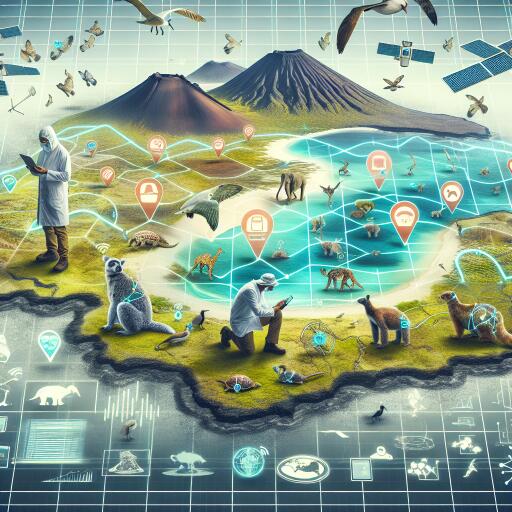
Revolutionizing Wildlife Conservation in the Galápagos with Satellite Tracking Technology
In the heart of one of the most biologically significant archipelagos on Earth, a groundbreaking approach to conservation is underway. The Galápagos Islands, a crucible of biodiversity, are now the forefront of a pioneering integration of technology and ecological preservation. At the center of these efforts lies the advanced use of satellite animal trackers, a tool that has significantly transformed our capacity to monitor and protect the region’s wildlife, especially its majestic giant turtles.
The deployment of satellite tracking devices on the wildlife of the Galápagos Islands represents a leap forward in conservation methodology. This technology not only unlocks previously inaccessible insights into the behavioral patterns and migratory paths of these animals but also plays a crucial role in the sustainability and management of their habitats. The Galápagos Islands, with their unique ecological systems, require a nuanced understanding of how various species interact within their environment. Satellite trackers provide exactly that, offering real-time data that informs conservation strategies and actions.
Giant turtles, emblematic of the Galápagos’ rich natural heritage, are now under the spotlight thanks to these advanced tracking mechanisms. By equipping these serene giants with satellite trackers, conservationists can gain invaluable data about their roaming patterns, feeding habits, and breeding sites. This information is paramount to ensuring the survival of these species, which play a pivotal role in the ecological balance of the archipelago. The detailed insights gained from tracking can help mitigate risks, guide the development of protected areas, and fine-tune conservation efforts to address specific needs and challenges faced by these animals.
The utilization of satellite tracking devices in the Galápagos is reflective of a broader commitment to employing cutting-edge technology in the service of environmental preservation. By harnessing these sophisticated tools, conservationists are better equipped to make informed decisions that contribute to the safeguarding of biodiversity. This technology not only enhances our understanding of animal behavior and ecosystem dynamics but also sets a precedent for conservation efforts worldwide. It underscores the vital role of technological innovation in the ongoing battle to protect our planet’s precious wildlife and natural habitats.
In conclusion, the integration of satellite tracking technology in the conservation initiatives of the Galápagos Islands marks a significant milestone in the quest to safeguard the archipelago’s unique ecosystems and the diverse species they host. As we continue to face global environmental challenges, the success of such innovative approaches offers hope and a potential blueprint for conservation efforts across the globe. By prioritizing the adoption of advanced technological solutions, we can ensure a more sustainable and resilient future for the natural world.





Leave a Reply